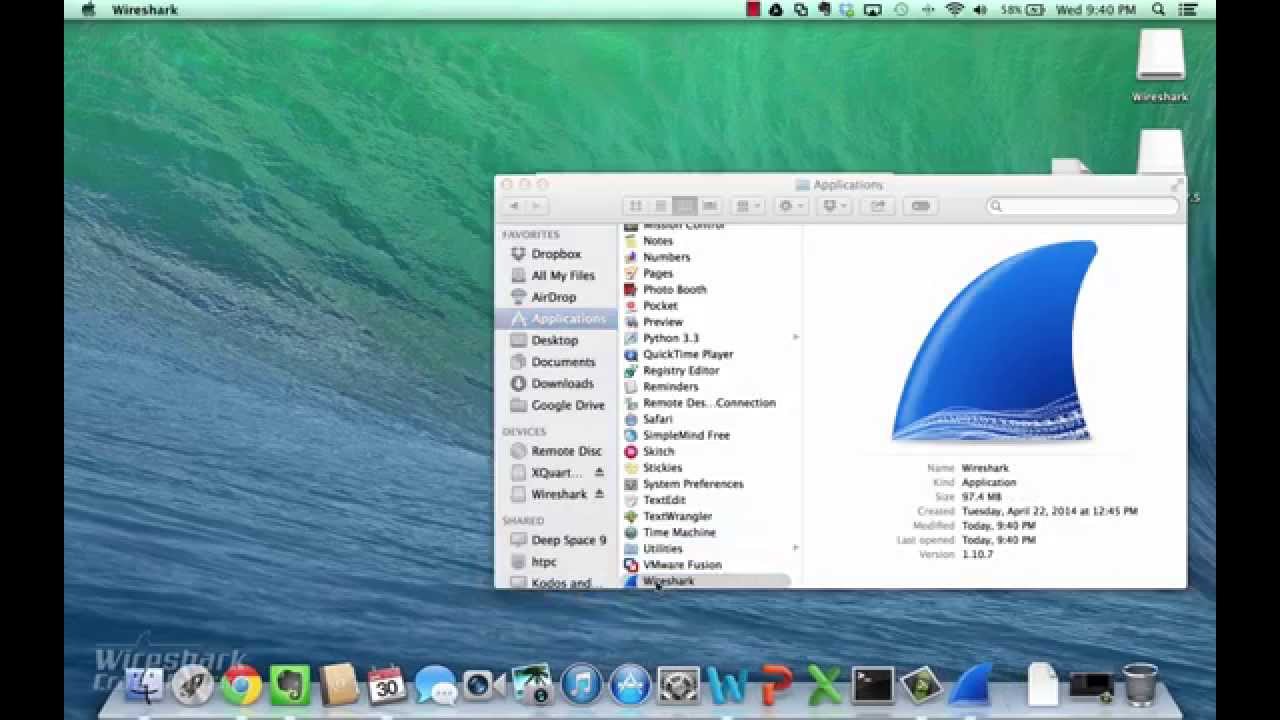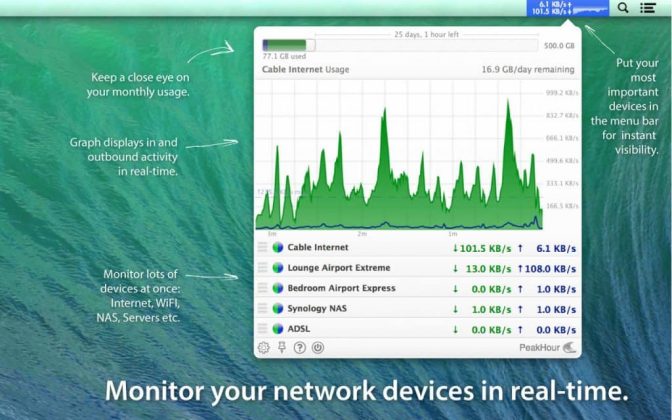

- Wireshark mac sierra for mac os#
- Wireshark mac sierra mac os x#
- Wireshark mac sierra password#
- Wireshark mac sierra license#
- Wireshark mac sierra windows#
# sudo /System/Library/PrivateFrameworks/amework/Versions/Current/Resources/airport -s # sudo /System/Library/PrivateFrameworks/amework/Versions/Current/Resources/airport -channel=48 # sudo ln -s /System/Library/PrivateFrameworks/amework/Versions/Current/Resources/airport /usr/sbin/airport

Note: because the path to the airport utility is so ugly, it may be a good idea to set a symbolic link to it from a directory in the path, e.g. Also, it has the ability to set the default wireless channel - which is crucial for sniffer programs (tcpdump, Wireshark) that are themselves unable to set the channel The airport utility is is not a sniffer program however, it can provide interesting information about the wireless LAN.
Wireshark mac sierra windows#
The file format is your standard wireshark PCAP file that can be read on the MAC or Windows via Wireshark.
Once you are finished with the trace, hit “Cntl-C” to stop the trace and the utility will display the name and location of the capture file. If you are using an Air, the wireless adapter is en0 rather than en1. You will lose any wireless connectivity to your network while the capture is occurring. You cannot specify the name of the capture file or where you will place the output. Wireshark mac sierra password#
You will be prompted to enter in your account password for verification. “sudo /usr/libexec/airportd en1 sniff 11” Once you have a terminal window open, you can run the follow command to capture a Wireless sniffer trace on RF channel 11 (802.11b/g):. Use the “command” + “Space bar” key combo to bring up the search diaglog box in the upper right top of the screen and type in the word “terminal”, this will search for the terminal application, select this application to run it. If you are running OS X 10.6 (Snow Leopard) or above, then you can easily use the command line utility “ airportd”. This document covers OS X 10.6 through 10.8. However, depending on what versions of OS X you are running, the commands may vary. Wireshark mac sierra mac os x#
Live data can be read from Ethernet, IEEE 802.Wireless sniffing on the Mac works well, as Mac OS X has built in tools to capture a wireless trace. Capture files compressed with gzip can be decompressed on the fly. Read/write many different capture file formats: tcpdump (libpcap), Pcap NG, Catapult DCT2000, Cisco Secure IDS iplog, Microsoft Network Monitor, Network General Sniffer® (compressed and uncompressed), Sniffer® Pro, and NetXray®, Network Instruments Observer, NetScreen snoop, Novell LANalyzer, RADCOM WAN/LAN Analyzer, Shomiti/Finisar Surveyor, Tektronix K12xx, Visual Networks Visual UpTime, WildPackets EtherPeek/TokenPeek/AiroPeek, and many others. The most powerful display filters in the industry. Captured network data can be browsed via a GUI, or via the TTY-mode TShark utility. Multi-platform: Runs on Windows, Linux, macOS, Solaris, FreeBSD, NetBSD, and many others. Deep inspection of hundreds of protocols, with more being added all the time. Wireshark mac sierra license#
Its open source license allows talented experts in the networking community to add enhancements.
Wireshark mac sierra for mac os#
Wireshark For Mac Os Sierra Vista, and several features not seen in any other product. wcap file is saved to the diagnostics report location on your Mac. Select a channel and width, then click Start to begin capturing traffic on that channel.
Sniffer captures traffic on your Wi-Fi connection, which can be useful when diagnosing a reproducible issue. You want RSSI to be high and noise to be low, so the bigger the gap between RSSI and noise, the better. Signal shows both signal (RSSI) and noise measurements over time. Factors that affect quality include the distance between your device and the router, and objects such as walls that impede the signal from your router. 
When the quality is too low, your device disconnects from the Wi-Fi router.
Quality shows the signal-to-noise ratio over time. Rate shows the transmit rate over time in megabits per second. Performance uses live graphs to show the performance of your Wi-Fi connection:. Scan finds Wi-Fi routers in your environment and gathers key details about them. Logging continues even when you quit the app or restart your Mac, so remember to disable logging when you're done. log file in the diagnostics report location on your Mac.  Logs enables background logging for Wi-Fi and other system components. Info gathers key details about your current network connections. Open them from the Window menu in the Wireless Diagnostics menu bar: Wireless Diagnostics includes additional utilities for network specialists.
Logs enables background logging for Wi-Fi and other system components. Info gathers key details about your current network connections. Open them from the Window menu in the Wireless Diagnostics menu bar: Wireless Diagnostics includes additional utilities for network specialists.








 0 kommentar(er)
0 kommentar(er)
